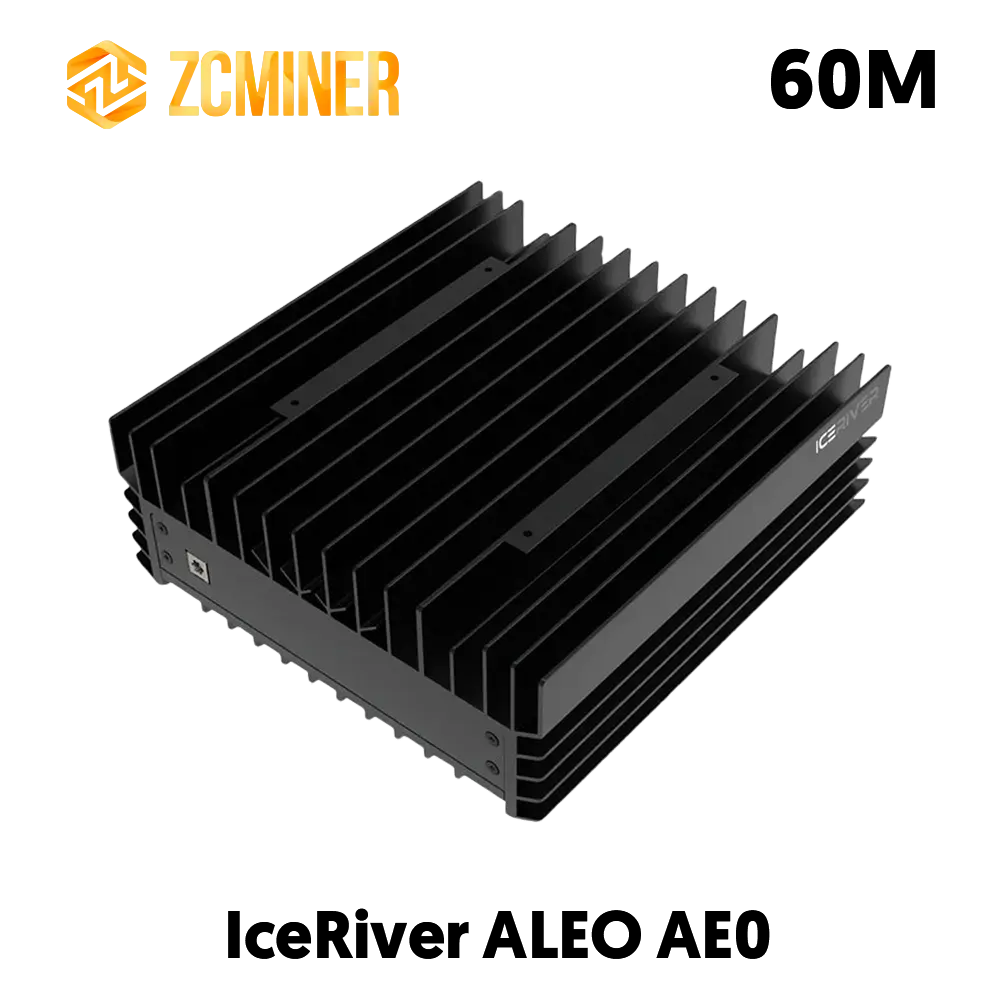In the world of cryptocurrency mining, the term hashrate frequently appears as a key performance indicator. Whether you're a seasoned miner or someone just stepping into the crypto ecosystem, understanding hashrate is essential for evaluating mining profitability, hardware efficiency, and blockchain security. In this in-depth guide, we’ll explore what hashrate is, why it matters, how it’s measured, what influences it, and its impact on both individual mining operations and entire blockchain networks.
What is Hashrate?
Hashrate is a measure of the computational power used per second in the process of mining cryptocurrencies. More specifically, it reflects how many hash functions—or guesses—a mining machine or entire network can perform each second in order to find the correct solution for a cryptographic puzzle.
These cryptographic puzzles are part of the consensus mechanism that validates transactions and secures the blockchain. When a miner solves one of these puzzles, they add a block to the chain and receive a reward, typically in the form of cryptocurrency.
For example, if a mining rig has a hashrate of 100 TH/s (terahashes per second), it is capable of attempting 100 trillion hash computations per second.
Why is Hashrate Important?
1. Determines Mining Speed and Profitability
The higher the hashrate of a miner, the more guesses it can make per second, which increases its chances of solving the puzzle before other miners. This means:
-
Faster block discovery
-
More frequent rewards
-
Higher overall revenue potential
Miners are constantly in competition with each other, so a higher hashrate can mean the difference between earning a block reward or missing out entirely.
2. Indicates Network Strength and Security
On a network level, the combined hashrate of all miners reflects the overall security of a blockchain. A network with a high hashrate is harder to attack because a malicious actor would need to control more than 50% of the total hashrate to execute a “51% attack.” This would allow them to rewrite transaction history or double-spend coins.
Popular blockchains like Bitcoin boast network hashrates in the exahash range (quintillions of hashes per second), making them highly secure.
How is Hashrate Measured?
Hashrate is measured in hashes per second (H/s), and due to the large volume of calculations involved, the following units are commonly used:

-
1 KH/s (kilohash) = 1,000 hashes/second
-
1 MH/s (megahash) = 1 million hashes/second
-
1 GH/s (gigahash) = 1 billion hashes/second
-
1 TH/s (terahash) = 1 trillion hashes/second
-
1 PH/s (petahash) = 1 quadrillion hashes/second
-
1 EH/s (exahash) = 1 quintillion hashes/second
To put this into context, a high-end ASIC miner like the Antminer S21 can deliver over 200 TH/s, while entire networks like Bitcoin operate above 400 EH/s as of early 2025.
Hashrate and Mining Difficulty
Mining difficulty is a dynamic setting that adjusts how complex it is to find a valid hash. Most blockchains adjust this difficulty approximately every 2,016 blocks (in Bitcoin’s case, roughly every two weeks) to maintain a consistent block time (e.g., ~10 minutes for Bitcoin).
If the total network hashrate increases—due to more miners joining or better hardware being deployed—the difficulty increases to maintain the block interval. Conversely, if hashrate drops, the difficulty lowers to ensure the network remains functional and fair.
This delicate balance between hashrate and difficulty is critical for blockchain stability and decentralization.
Factors that Influence Hashrate

Several factors can directly or indirectly affect a miner’s hashrate or a network’s total hashrate:
1. Hardware Type
-
ASIC Miners (Application-Specific Integrated Circuits): These offer the highest hashrates and are purpose-built for mining specific algorithms like SHA-256 (Bitcoin) or Blake3 (Kaspa).
-
GPU Miners (Graphics Processing Units): Less powerful than ASICs but more versatile; often used for mining altcoins.
-
CPU Miners (Central Processing Units): Least efficient, used mainly for experimental or low-difficulty blockchains.
2. Hardware Condition and Overclocking
Hashrate can be boosted through overclocking—a process that increases the performance of the miner's chips. However, overclocking also increases power consumption and heat, which may reduce hardware lifespan if not managed properly.
3. Internet Connectivity
While the actual hashing is done locally, stable internet access ensures miners receive new work promptly and submit completed hashes without delay. Network lag or downtime can negatively affect effective hashrate.
4. Electricity Supply and Cooling
Inadequate or unstable power sources can reduce miner performance or cause shutdowns. Additionally, high-performance miners generate significant heat. Poor cooling can lead to thermal throttling, where the machine lowers its performance to prevent overheating.
Hashrate vs. Power Efficiency
Power efficiency is just as important as raw hashrate. For example, if Miner A has a hashrate of 100 TH/s with a power draw of 3000W, and Miner B has 90 TH/s with 2000W, Miner B may be more profitable due to lower operational costs.
Modern miners are now rated not just on their hashrate but on their Joules per Terahash (J/TH)—a measure of how much energy is used to perform one trillion hashes. Lower values indicate better energy efficiency.
How to Monitor Hashrate
Mining software and platforms provide tools to monitor hashrate in real-time. Key metrics include:
-
Reported Hashrate: Direct output from the mining hardware.
-
Effective Hashrate: Based on the number of valid shares submitted to the mining pool.
-
Average Hashrate: Smoothed average over time for better trend analysis.
Large mining operations also use centralized dashboards to track the performance of hundreds or thousands of devices, alerting them when hashrates drop unexpectedly.
Hashrate Trends and the Future
1. ASIC Domination
As mining becomes more competitive, the push for higher hashrates and better efficiency is leading to rapid ASIC innovation. Miners like the Bitmain Antminer S21 and WhatsMiner M63 are pushing beyond 350+ TH/s in 2025.
2. Geographic Shifts
Regions with low electricity costs—such as parts of the U.S., Kazakhstan, or Paraguay—continue to attract large-scale mining farms. These shifts influence global network hashrates and the decentralization of blockchain networks.
3. Environmental Impact
The environmental footprint of proof-of-work mining remains a hot topic. High hashrate operations consume massive amounts of electricity, prompting calls for regulation or transition to alternative consensus mechanisms like Proof of Stake (PoS) or Proof of Space.
Common Misconceptions About Hashrate
-
“Higher hashrate = always better.” Not necessarily—if power costs are too high or difficulty too great, a high hashrate might still be unprofitable.
-
“Hashrate is constant.” Hashrate fluctuates based on network conditions, hardware availability, and even temperature.
-
“More hashrate guarantees block rewards.” Mining is still probabilistic. A higher hashrate improves chances, but does not guarantee rewards, especially in solo mining.
Conclusion
Hashrate is a foundational concept in cryptocurrency mining, crucial for evaluating miner performance, profitability, and network security. For individual miners, it informs equipment choices, electricity planning, and mining pool participation. For networks, it ensures consistent operation and resistance to attack.
As the crypto ecosystem continues to evolve, the race for higher hashrates and better energy efficiency will only intensify. But with innovation also comes responsibility—particularly in managing the environmental impact of large-scale mining operations.
Whether you're a hobbyist or an enterprise miner, understanding hashrate is the first step toward smarter, more sustainable mining.
References
-
CryptoMinerBros. “What is Hashrate?” https://www.cryptominerbros.com/blog/what-is-hashrate/
-
Coinbase. "What is hash rate?" https://www.coinbase.com/learn/crypto-glossary/what-is-hash-rate
-
Robinhood. "What's hashrate?" https://robinhood.com/us/en/support/articles/cryptocurrency-hashrate
-
Koinly. "What is Hashrate and Why Does It Matter?" https://koinly.io/blog/what-is-hashrate/
-
Wired. “Bitcoin Will Burn the Planet Down. The Question: How Fast?” https://www.wired.com/story/bitcoin-will-burn-planet-down-how-fast
-
CryptoMinerBros. “How to Calculate Crypto Mining Profits” https://www.cryptominerbros.com/blog/calculate-crypto-mining-profits/
-
CryptoMinerBros. “What is Mining Difficulty?” https://www.cryptominerbros.com/blog/what-is-mining-difficulty/











Leave a comment
This site is protected by hCaptcha and the hCaptcha Privacy Policy and Terms of Service apply.